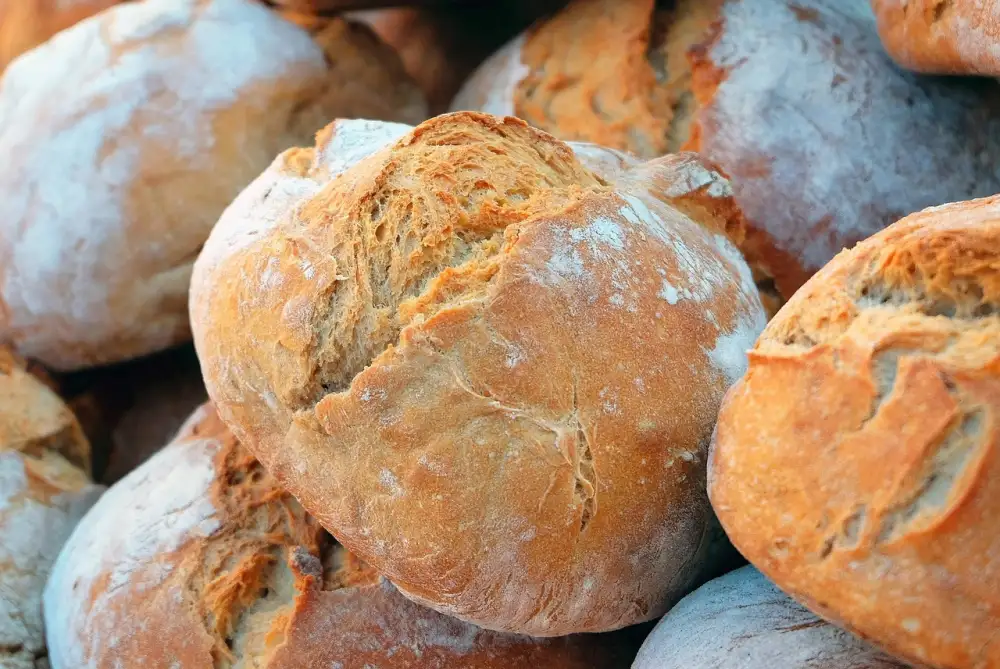Delightful Easter Bread Recipe: A Flavorful Tradition for Your Home

Easter bread, also known as "Pasca" or "Pane di Pasqua," is a traditional sweet bread enjoyed during the Easter season in many cultures around the world. This special bread is often rich in flavor, infused with ingredients like citrus zest, dried fruits, and aromatic spices. It holds a symbolic significance, representing renewal and abundance during this festive time of year. The process of making Easter bread is not only a culinary tradition but also a way to bring families together to celebrate the joy of Easter through the art of baking.
History and Significance of Easter Bread
Easter bread, also known as "Pascha" or "Paska," holds deep historical and cultural significance. The tradition of baking Easter bread dates back centuries, with roots in various European countries such as Italy, Greece, Russia, and Poland. This special bread is often enriched with symbolic ingredients like eggs, which represent new life and rebirth. In many cultures, it is a staple during Easter celebrations, symbolizing the end of Lent and the joy of Easter Sunday. The act of sharing Easter bread with loved ones also signifies unity, love, and blessings for the coming year.
Ingredients Required for Easter Bread
To make a delicious Easter bread, you will need the following ingredients: 4 cups of all-purpose flour, 1/3 cup of sugar, 1 packet of active dry yeast, 1 teaspoon of salt, 2/3 cup of milk (warmed), 1/4 cup of unsalted butter (melted), 3 eggs, 1/2 cup of raisins or candied fruit (optional for added sweetness), and colored sprinkles or icing for decoration. These basic ingredients come together to create a soft and slightly sweet bread perfect for celebrating Easter with family and friends.
Step-by-Step Instructions for Making Easter Bread
1. In a mixing bowl, combine warm milk, sugar, and yeast. Let it sit for 5-10 minutes until frothy.
2. Add in melted butter, eggs, vanilla extract, and salt. Mix well.
3. Gradually incorporate flour until a dough forms.
4. Knead the dough on a floured surface for about 10 minutes until smooth and elastic.
5. Place the dough in a greased bowl, cover with a damp cloth, and let it rise in a warm place for 1-2 hours.
6. Punch down the risen dough and divide it into three equal parts.
7. Roll out each part into a rope and braid them together.
8. Transfer the braided dough to a baking sheet lined with parchment paper.
9. Cover and let it rise again for 30-45 minutes.
10. Preheat the oven to 350°F (180°C) while the bread rises.
11. Brush the bread with an egg wash before baking for 25-30 minutes or until golden brown.
12. Allow the Easter bread to cool before serving.
Enjoy your homemade Easter bread with loved ones!
Tips and Tricks for Perfecting Your Easter Bread
1. Use fresh ingredients: Make sure your flour, yeast, and other ingredients are fresh to ensure the best results.
2. Knead the dough properly: Kneading the dough thoroughly helps develop gluten, giving your bread a good texture.
3. Allow time for rising: Let the dough rise in a warm, draft-free place until it doubles in size for a light and fluffy bread.
4. Add flavors creatively: Experiment with adding citrus zest, dried fruits, or nuts to enhance the flavor of your Easter bread.
5. Brush with egg wash: Before baking, brush your bread with an egg wash for a shiny crust and beautiful golden color.
6. Monitor baking time: Keep an eye on your bread while it bakes to prevent over-browning or undercooking.
7. Cool properly: Allow your Easter bread to cool completely on a wire rack before slicing to maintain its texture and flavor.
Serving Suggestions and Pairings
Easter bread is a versatile and delicious treat that can be enjoyed in various ways. When serving Easter bread, consider pairing it with a spread of flavored butter or cream cheese to enhance its rich flavor. Additionally, you can serve slices of Easter bread alongside a cup of hot tea or coffee for a delightful afternoon snack. For a more indulgent treat, try toasting slices of Easter bread and topping them with a dollop of whipped cream and fresh berries. This will add a refreshing contrast to the sweet and spiced flavors of the bread, making it a perfect dessert option for your Easter celebration. Remember to store any leftover Easter bread in an airtight container to maintain its freshness and enjoy it for days to come.
Easter bread is not just a delicious treat; it's a symbol of renewal and new beginnings. By following this delightful recipe, you can bring a piece of tradition and flavor into your home during the Easter season. Whether enjoyed with a cup of tea in the morning or as a dessert after a festive meal, Easter bread is sure to bring joy to your family and guests. So, gather your ingredients, embrace the process of baking, and savor the wonderful aroma that will fill your kitchen. Happy baking and happy Easter!
Published: 18. 03. 2024
Category: Home



